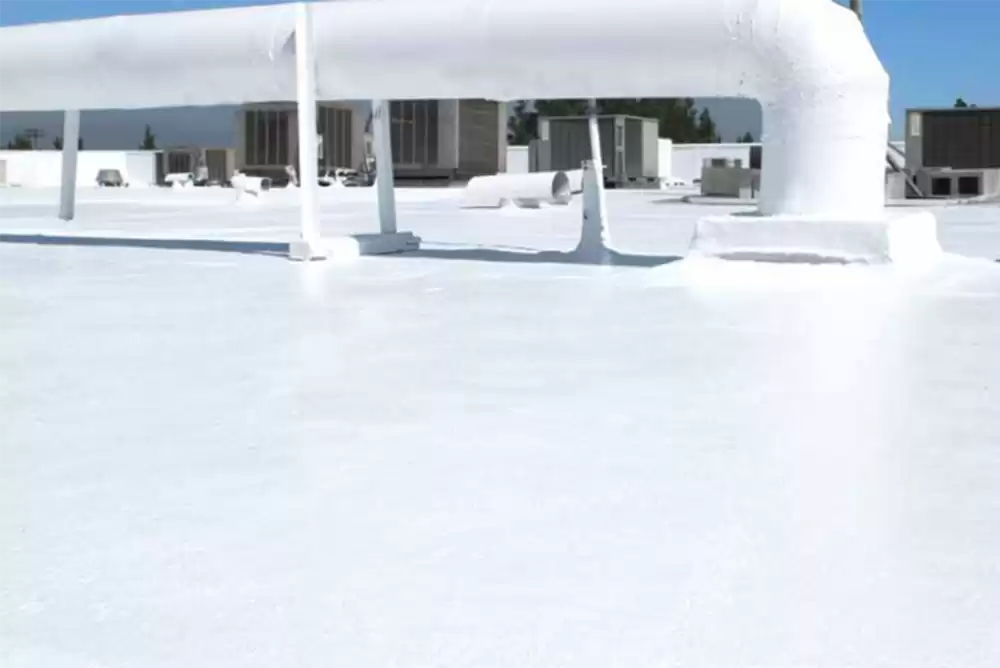By Gary Stewart
When it comes to maintaining the longevity of your roof, the decision between roof restoration and replacement can be challenging. Roof restoration offers a cost-effective solution that extends the life of your existing roof, making it an attractive option for property owners looking to avoid the expense of a complete replacement. However, not every roof is a candidate for restoration, and it is crucial to understand when it is the right choice. By conducting a thorough assessment and weighing the potential return on investment (ROI), you can decide whether to restore your roof or prepare for replacement. In this comprehensive guide, we will explore the benefits of roof restoration, how to identify when it is needed, and the process involved in giving your roof a new lease on life.
Benefits of Roof Restoration vs. Replacement
When considering whether to restore your roof or opt for a total roof replacement, the primary benefit of restoration lies in extending the life of your existing roof. However, before deciding, assessing if your roof is even a candidate for restoration is crucial. This means thoroughly understanding the condition of the roof underneath. Many products on the market claim to be a “miracle in a bucket,” but such claims are often unrealistic.
As a property owner, it is essential to have a professional assess your roof to determine how much life remains and how much more a restoration could add. Ultimately, the decision comes down to whether the return on investment (ROI) is worth it. It is often a good option if a restoration can extend the roof’s lifespan by several years at a reasonable cost. However, replacement might be inevitable in cases of severe damage, as no product can offer a miracle solution for a roof that’s too far gone.
If a roofer tells you that your roof has about five years left, and restoration might only extend that by one or two years, you have to consider if it is really worth the investment for such a short-term gain. In this situation, it might be better to maintain the roof as is and try to make it to that five-year mark without a major expense. During this time, you can save money and plan for a complete replacement when it is absolutely necessary.
On the other hand, if your roof has 15 or 20 years of life left, and a full restoration could add another ten years, giving you a total of 25 more years, it is a different story. If the restoration cost is reasonable and the return on investment (ROI) looks good, this could be a smart choice for the property owner or landlord.
We frequently use a manufacturer called Polyglass, which is both a roofing and coating manufacturer. Polyglass provides the owner with a twenty-year warranty when we install the original roof. If we recoat that roof every ten years, Polyglass extends the warranty by an additional ten years. This is an appealing option for long-term property owners who are not planning to sell and want to maximize the lifespan of their roof. It is a great deal in terms of ROI—especially when the roof restoration offers extended warranty and protection, making it a wise investment.
Common Signs Your Roof Needs Restoration
The first signs that a roof restoration might be needed often include the protective coating or minerals starting to wear away, or you might notice chalking, especially with a single-ply system. Depending on the roofing material, this typically occurs around the nine- to twelve-year mark. A restoration works by adding a new protective layer—essentially like reapplying sunscreen—to prevent the underlying material from drying out and degrading.
Types of Roof Materials Suited for Restoration
Different roof materials can impose certain constraints on restoration. For example, a full gravel rock roof is unsuitable for a coating system—you would need to look at alternatives like adding more gravel or another method to protect the roof. There are compatible coatings for single-ply systems like PVC or TPO, but if the damage is caught too late, getting anything to adhere correctly can be challenging.
It is also essential to understand that restoration is not just about spraying a coating and expecting ten more years of life. Before applying the coating, you need to perform remedial repairs first, especially in areas prone to leaks or weak spots. The extent of these repairs and the type of coating used depends on how thorough you want the restoration to be.
Roof Restoration Process Overview
Once we have determined that the roof is a good candidate for restoration, the next step is marking all the areas that need remedial repairs. Sometimes, this involves a simple recourse, but other times, it requires adding material to specific areas and securing flashings and edges. After the repairs, the roof is power-washed, cleaned, and primed with a material that helps the coating bond better.
The final step is applying the coating, which varies based on the manufacturer and warranty requirements. Essentially, the more material you use, the longer the extended warranty—similar to how two coats of paint last longer than one. The warranty length can depend on how much material is used during restoration.
Conclusion
There is no such thing as a “miracle in a bucket.” If your roof is showing significant issues like major cracking or delamination, no liquid spray is going to magically fix it. It is important to work with the manufacturer of the original roof to explore options for extending the warranty. Make sure your contractor is aligned with the manufacturer’s recommendations as well.
Choosing the original manufacturer and contractor is usually the safer option, as these companies are well-established and more likely to still be around if any issues arise. Be cautious of new contractors promising a miracle fix—chances are, they will not be around in ten years to honor any warranty they offer.
Author Bio
As a proud fourth-generation commercial roofing contractor, Gary Stewart has dedicated his career to upholding his family’s legacy of quality and craftsmanship. Today, as a managing partner, he works alongside his relatives, blending tradition with innovation to deliver exceptional roofing solutions. His commitment to excellence and teamwork strengthens SBR Roofing’s projects and deepens those family bonds, ensuring that every roof we build is a testament to our shared values of integrity, durability, and service. Together, we are constructing roofs and building a future for our community and family lineage.







